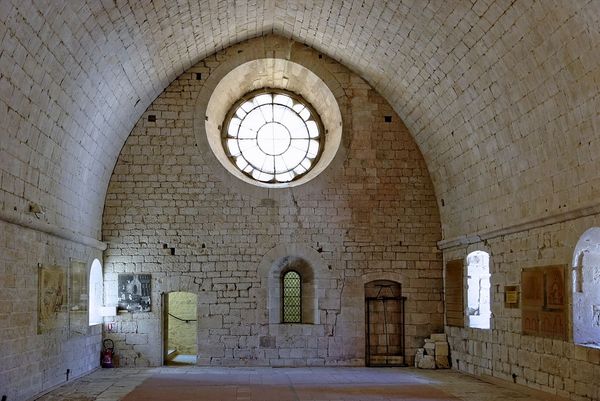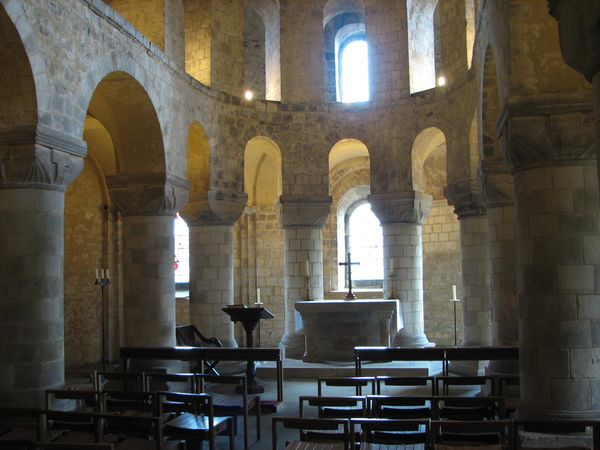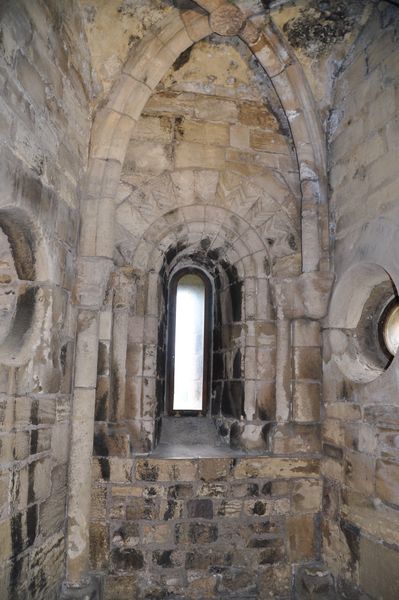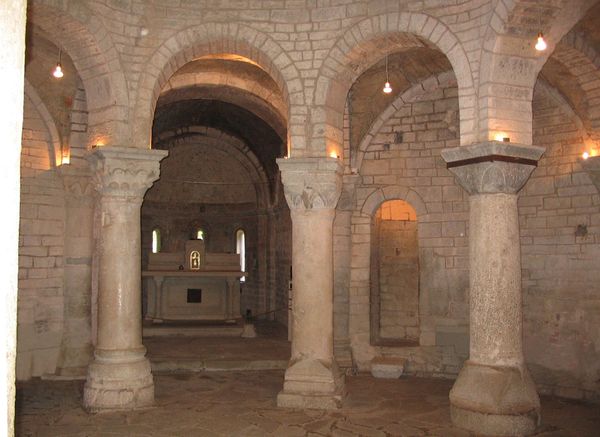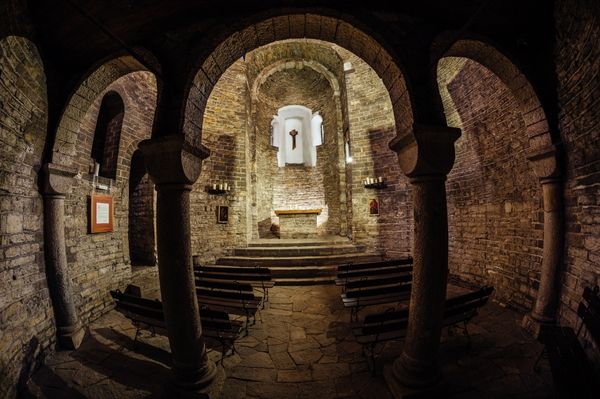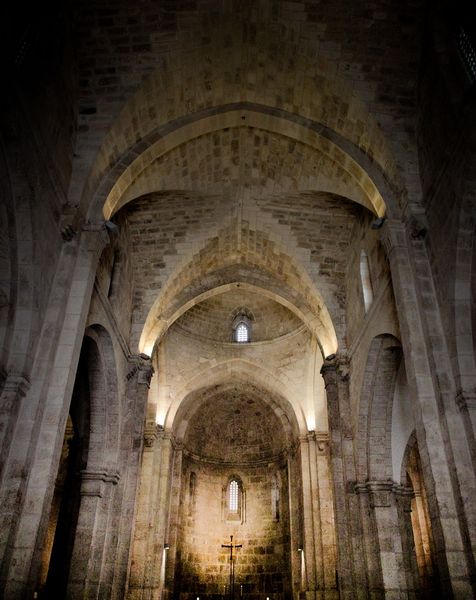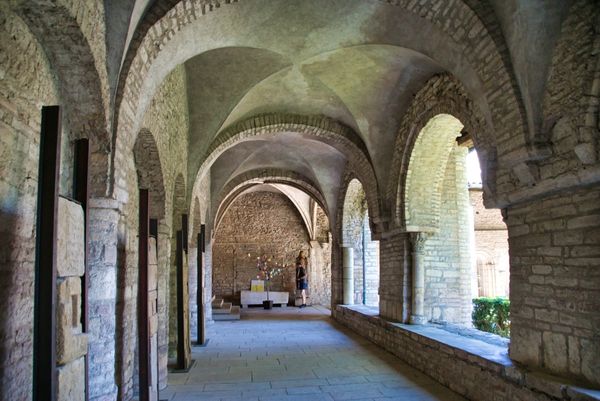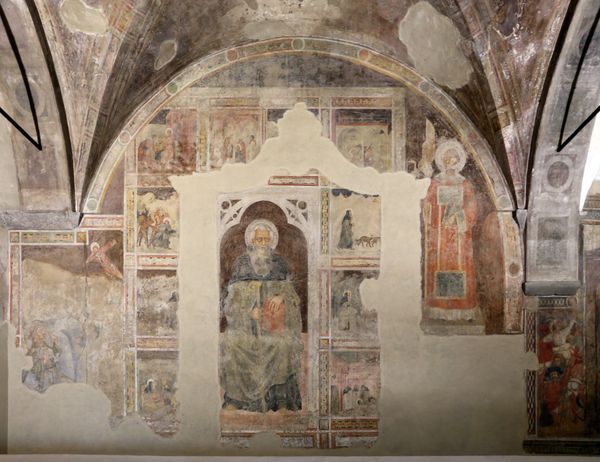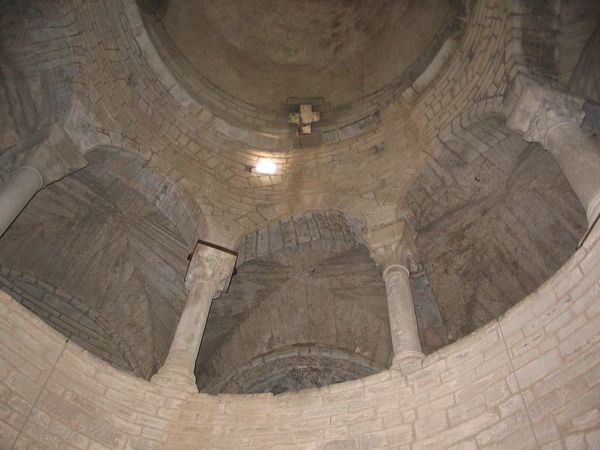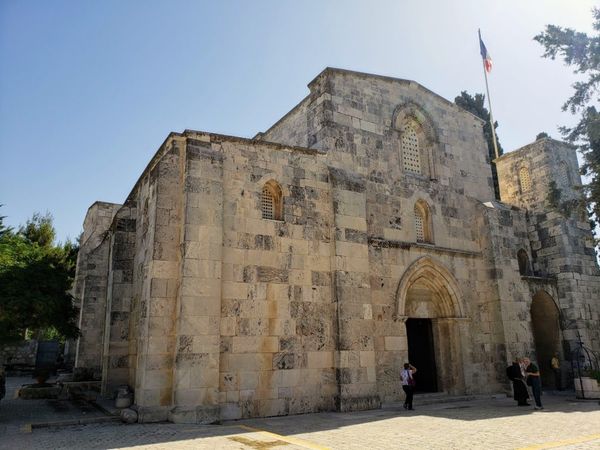
architecture
#
medieval
#
sculpture
#
holy-places
#
historic architecture
#
romanesque
#
history-painting
#
architecture
Copyright: Public domain
Curator: What strikes you first about this image, the Interior of Krak Des Chevaliers? It dates back to 1170 and offers an immersive experience of Romanesque architecture in Syria. Editor: The sheer weight of it. All those massive stone blocks and arches feel monumental and somber. A powerful assertion of permanence, even now. Curator: The weight, certainly, both literal and symbolic. Notice how the light falls; that single window almost seems like a divine spotlight. Romanesque churches, particularly those with crusader origins, utilized light sparingly but purposefully. It can evoke feelings of awe and piety. Editor: Yes, that light, strategically placed, makes the space feel almost theatrical. But what I find really fascinating is the location of this Krak des Chevaliers. Building on that location underscores how political power, religious authority, and military might intersected in these spaces. Curator: Absolutely, these were not just religious buildings. They were strategic, political, and deeply interwoven into the crusader identity. In Romanesque symbolism, consider the arch. It can suggest a gateway, both earthly and spiritual, leading to transformation or revelation. In this interior, each arch, each stone is carefully shaped to represent the church’s purpose. Editor: The building literally embodies power, built for control. I am drawn to how later administrations embraced such monuments and symbols as an attempt to connect their contemporary power and projects with their historical precedents. That history becomes an assertion of continuity, sometimes regardless of the facts on the ground. Curator: Right, historical narrative shaped through symbolic and architectural choices. So, walking away from this space, one gets a sense of… what lingers? Editor: The intersection of history and architecture, which becomes an intersection of politics, and social relations. And how all of that influences the cultural understanding and acceptance of authority. Curator: I agree; power isn't simply imposed but ingrained—in the stone, in the light, and in the mind. Thank you.
Comments
No comments
Be the first to comment and join the conversation on the ultimate creative platform.
